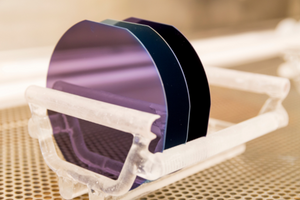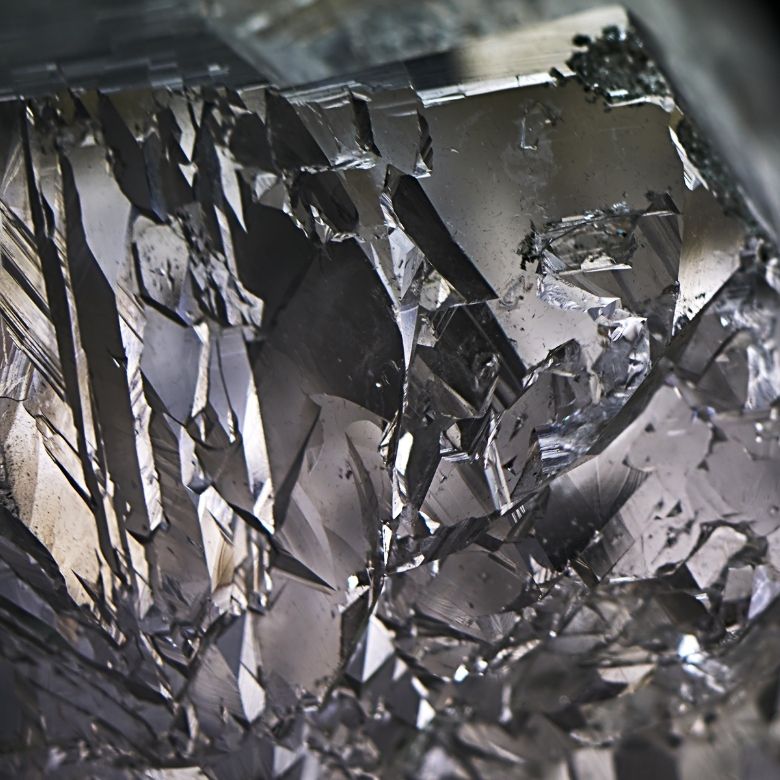Silicon glass – also called quartz or silica, is a type of premium glass made almost exclusively of pure silica. Silicon dioxide (SiO2) accounts for as much as 99.9% of the raw material weight and determines the utility value of the material.

How is silica glass made?
The raw material for silicon glass production are high-quality mountain crystals. The basic production method is to melt quartz in a vacuum or inert atmosphere at a temperature of approx. 2,000°C. The process is carried out in an electric or flame furnace, and the molten material is then slowly cooled.
Alternatively, silica glass can also be produced by fusing fine quartz sand. However, the product has an iridescent effect due to the entrapment of microscopic air bubbles.
The highest quality quartz glass, labelled JGS-1, is currently produced from synthetic silica (SiCl4). Treated with oxygen-hydrogen flame, it becomes a raw material of exceptional purity. The product is free of bubbles and inclusions, and guarantees optimal optical parameters.
Physical and chemical properties of silicon glass
Silicon glass has a low coefficient of thermal expansion. It means that it is resistant to thermal shock. When heated to very high temperatures (as high as 1100°C), it will not crack even if suddenly cooled in water.
Other significant utility advantages of quartz glass are:
- perfect transparency;
- minimal heat and electricity conductivity;
- high UV and IR radiation transmittance;
- relatively high compressive and tensile strength.
The unique chemical properties of silicon glass are also noteworthy. It is resistant to water and acids (except hydrofluoric acid). The disadvantage of the material is its low resistance to alkali.

How is silicon glass different from other types of glass?
Compared to other types of glass used in industry (e.g. float glass or technical glass), quartz glass has exceptional transparency, durability and transmittance to ultraviolet and infrared rays. The latter property is associated with low absorption of electromagnetic radiation.
Chemical resistance and high transformation temperatures make silicon glass suitable for very specific scientific and industrial applications. Despite the relatively high price, this raw material is practically irreplaceable in many branches of production.
Quartz glass – the most important applications
Silicon glass is widely used in optics, especially photometry and spectroscopy. It is used in the production of measuring equipment, imagesetters, UV lamps, optical lenses, microscope and sight glasses, as well as laser lenses and mirror prisms. An indoor tanning salon is also a popular commercial application where the level of ultraviolet transmittance is particularly important.
Due to its high physical and chemical resistance, silica glass is used in the manufacture of laboratory glassware such as crucibles, beakers, evaporators, annealing pans and combustion boats. It is also irreplaceable as a high-quality watch glass and a raw material for the production of heat-resistant ceramic tiles.
Quartz glass is also used to manufacture the cores of telecommunication optical fibres. The parameters of transparency and low dispersion determine the high suitability in this context.
Other prospective fields of silicon glass application include semiconductor manufacturing, the lighting industry, electronics and photography. After metallisation, it can also be used for the production of precise microwave circuits.

Choosing the optimal silicon glass
Quartz glass is classified depending on the purity degree, which affects the final characteristics of the product. In optics, it is preferable to use the highest quality JGS-1 glass made of synthetic silica. JGS-2 and JGS-3 quality classes are associated with lower performance characteristics.
For each industrial application it is therefore advisable to select a silicon glass that combines quality requirements with economic rationality. Universal standards of material categorisation facilitate making the optimal decision.